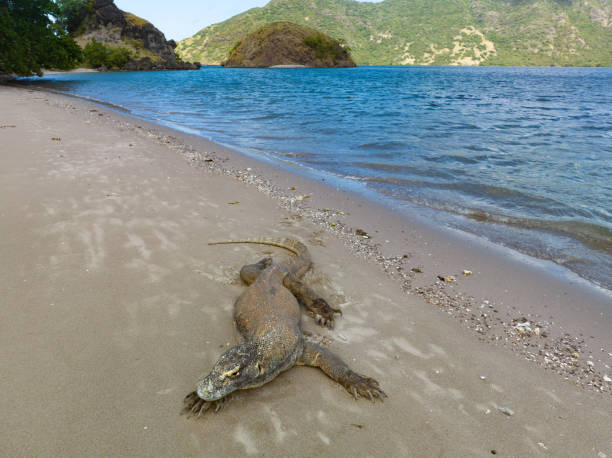Komodo dragons are one of the most iconic animals in the world. These giant lizards are found only in Komodo Island, Indonesia, and are considered a living fossil. However, Komodo dragons face several challenges, and their future is uncertain.
Komodo Island is a group of islands in the Lesser Sunda Islands of Indonesia. The largest island in the group is Komodo Island, where the Komodo dragons are found. The other islands in the group include Rinca Island, Padar Island, and Gili Motang.
Factors Can Make The Dragon Threatened
- The destruction of habitat is one of the most significant challenges to Komodo dragons. The dragons live in a relatively small area, and their habitat is being destroyed by human activities such as logging, agriculture, and mining. This loss of habitat is forcing Komodo dragons to live in smaller and smaller areas, which makes them more vulnerable to predators and other threats.
- Poaching is another major threat to Komodo dragons. These lizards are hunted for their meat, skin, and scales. Poaching is a serious problem, and it is estimated that thousands of Komodo dragons have been poached in recent years.
- Climate change is also a threat to Komodo dragons. The dragons are cold-blooded animals, relying on their environment to regulate their body temperature. Climate change is causing the temperatures in the dragons’ habitat to rise, which could make it difficult for them to survive.
In addition to these threats, Komodo dragons also face challenges from tourism. The islands where Komodo dragons live are popular tourist destinations, and the increasing number of visitors strains the dragons’ habitat.
What can be done to conserve Komodo dragons?
Several things can be done to conserve Komodo dragons. These include:
- Protecting their habitat: The Indonesian government has created many protected areas for Komodo dragons, but more must be done to ensure these areas are effectively managed. This includes reducing the number of island visitors and ensuring that visitors do not harm the dragons’ habitat.
- Reducing poaching: Poaching is a serious problem, and it is crucial to stop this illegal activity. This can be done by increasing law enforcement and public awareness.
- Addressing climate change: Climate change is a long-term challenge, but some things can be done to mitigate its effects on Komodo dragons. For example, the Indonesian government is working to reduce greenhouse gas emissions.
- Managing tourism: Tourism can be a positive force for conservation, but it is crucial to manage it in a way that does not harm the dragons’ habitat. This includes ensuring visitors stay on designated trails and not feed the dragons.

The future of Komodo dragons is uncertain, but there is still hope for these amazing creatures. With suitable conservation measures, Komodo dragons can be saved from extinction.
Read More:
The Best Way to Explore Komodo: A Diving Adventure
Encountering Rare Species while Snorkeling in Nusa Penida
Here are some additional challenges that Komodo dragons face:
- Disease: Komodo dragons are susceptible to several diseases, including salmonella and parasites. These diseases can be spread by tourists and other visitors, posing a severe threat to the dragons’ health.
- Genetic diversity: Komodo dragons have a limited gene pool, which makes them more vulnerable to diseases and other challenges. This low genetic diversity is also a result of habitat loss and poaching, which have reduced the size of the dragon population.
- Inbreeding: The low genetic diversity of Komodo dragons has led to inbreeding, which can cause birth defects and other problems. This inbreeding is a severe threat to the long-term survival of the species.
Despite these challenges, several organizations and individuals are working to conserve Komodo dragons. These efforts are making a difference, and there is hope for the future of these fantastic creatures.
